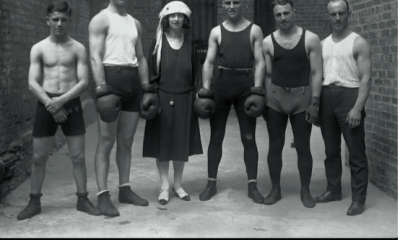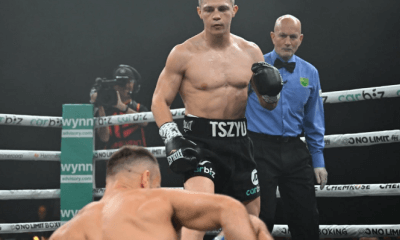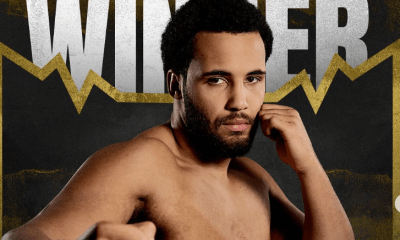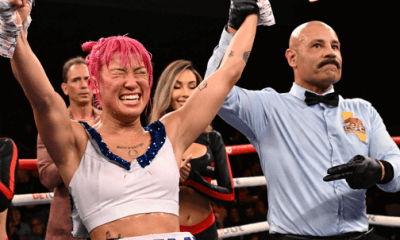Canada and USA
The Hauser Report: Deontay Wilder Walks Through Fire to Win
One fight out of the 21 bouts that were contested – Deontay Wilder vs. Luis Ortiz – was a magnet for media attention and fan interest.
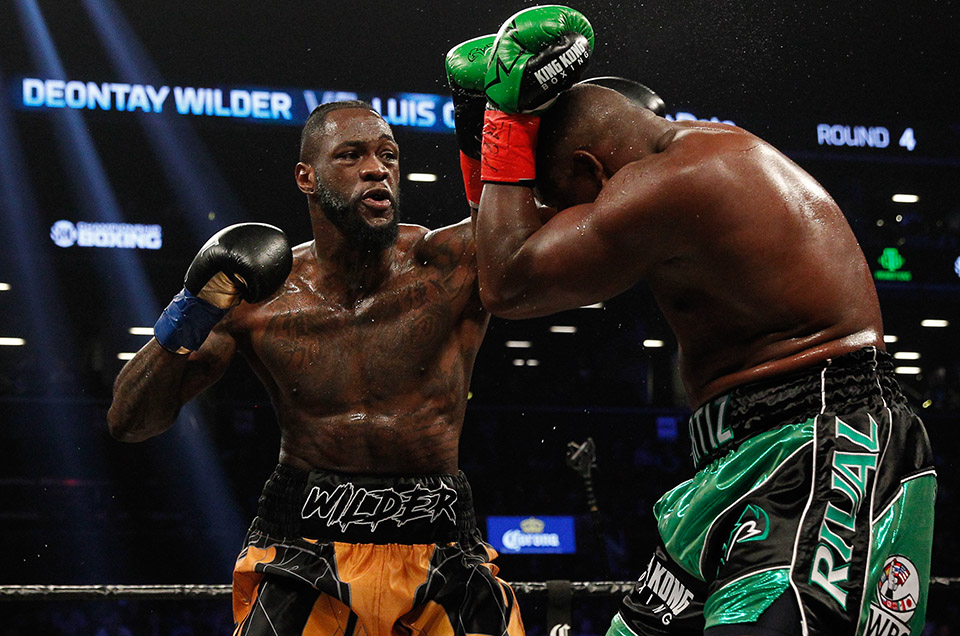
There were competing fight cards at Barclays Center and Madison Square Garden on March 3. One fight out of the 21 bouts that were contested – Deontay Wilder vs. Luis Ortiz – was a magnet for media attention and fan interest.
Wilder won a bronze medal at the 2008 Olympics. He was a work in the early stages of progress when he turned pro that year. A decade later, at age 32, he’s progressing.
Wilder has a potent right hand that can detonate with one-punch knockout power. He has learned to protect a suspect chin by fighting at a distance. And he has benefited from the reality that the heavyweight division is weak at the present time and the fact that he has been able to ply his trade in a parallel universe created by Al Haymon. All of the above enabled Deontay to pound out a 39-0 (38 KOs) record and claim the WBC heavyweight crown.
Ortiz says that he will celebrate his 39th birthday later this month. He might be older. A product of the Cuban amateur system, Luis turned pro in 2010. His career peaked 27 months ago when he demolished Bryant Jennings. Since then, he has looked ordinary. Ortiz has also tested positive for illegal performance enhancing drugs on multiple occasions while remaining undefeated in 28 pro fights with 24 KOs.
The build-up to Wilder-Ortiz was characterized by the usual back-and-forth:
* Wilder: “We all know what when Deontay Wilder get under those lights, those cameras, I perform my best. They never had a guy in there so vicious, so mean as me. And it’s so real.”
* Ortiz: “He doesn’t intimidate me. His trash talk makes me laugh. It’s just a lot of noise. But I’ve had it with this guy. He talks too much. He has a big mouth. He has insulted me and has said too many dumb things. He’s going to find himself on the canvas before he knows it.”
* Wilder: “He dealing with a monster. He dealing with a guy with a killer instinct. I am the king of the jungle. I am the lion of the jungle.”
* Ortiz: “He says he’s going to kill ‘King Kong.’ He’s going to knock me out. I’m not like those other guys he fought. I’m a real fighter, tough and with a lot of experience.”
* Wilder: “I’ve always said I’m the best. I say it all the time. I speak it. I believe it. I love to hit people in the face. I love to see their body on the canvas.”
* Ortiz: “I will tear the skin off his body.”
* Wilder [to Ortiz at the final pre-fight press conference two days before the fight]: “I could f*** tonight and still beat your ass on Saturday.”
On paper, Ortiz had the better pedigree – 362 fights in the Cuban amateur system. But that meant there was a lot of wear and tear on his body. Amateur fights in Cuba are hard.
Then there was the matter of Luis’s age.
“We don’t know what Ortiz’s real age is,” Showtime commentator Al Bernstein acknowledged. “He could be an AARP member for all we know.”
And Showtime expert analyst Paulie Malignaggi noted the problems that fighters face when they’re caught doping and then have to fight clean.
“One thing I got to say,” Malignaggi offered. “And nobody is saying this. It’s like the big elephant in the room. Ortiz, would he be as effective minus the PEDs? It seems like a lot of the big wins and a lot of the strength may have come from that. The guy failed twice, maybe three times. And you have to start asking the question, how good is this guy if he’s clean? You have to wonder about this fight that we’re all getting excited about. Is the fight really that good or is Deontay naturally that much better. You don’t want to downplay Ortiz too much because he does come from that amateur system and he does have skills. But [was] the power bulked up? That’s my question.”
There were 14,609 fans at Barclays Center on fight night, most of them Wilder partisans. Deontay had weighed in one day earlier at 214-3/4 pounds, the lightest he’d been since his second pro fight in 2009. Ortiz, in line with recent outings, registered 241-1/4 pounds and had a role of flesh around his waist. Wilder was a 3-to-1 betting favorite.
On one level, the early rounds were dull. Both men fought cautiously. Wilder spent the first few stanzas throwing rangefinder jabs while looking for an opening to throw his big right hand. Ortiz plodded forward behind an equally passive jab.
The crowd booed the lack of action. But there was an underlying tension because of two variables that attach to Wilder: his power and a suspect chin. Deontay had twelve rounds to land THE right. If he didn’t get whacked out first.
Fifteen seconds before the end of round five, Wilder finally landed the right and followed with another that deposited Ortiz on the canvas. Luis rose and, in the first half of round six, weathered the storm that followed. Deontay was swinging wildly, missing a lot. And Luis took the blows that landed well.
Then the tables turned.
Two minutes 20 seconds into round seven, Ortiz stunned Wilder with a hard straight left and followed with a barrage of punches that pummeled Deontay around the ring. Wilder appeared to be out on his feet. But he stayed on them.
At that point, the New York State Athletic Commission fumbled the ball.
In recent years, the NYSAC has come under heavy criticism for substandard medical procedures that led to the state paying tens of millions of dollars to settle claims against the commission. In response, the NYSAC modified its medical protocols. Most of the changes have been good. Some aren’t.
The NYSAC now requires ring doctors to stand on the ring apron and observe both fighters during all breaks between rounds. If a doctor wants to examine a fighter from inside the ring, he asks the referee to call a time out. This has led to multiple occasions during fights when a boxer is examined and the action is put on hold to the dismay of the opposing fighter and the crowd.
Does the practice make sense?
Dr. Margaret Goodman (former chief ringside physician and chairperson of the medical advisory board for the Nevada State Athletic Commission) is a neurologist and one of the foremost advocates for fighter safety in the United States. Asked about doctors standing on the ring apron between rounds, Dr. Goodman says, “That’s more for show than anything else. If you need to get in there, get in there.”
And what about extending the one-minute break between rounds as opposed to a ring doctor examining the fighter during the traditional one-minute rest period?
“I understand the need to safeguard the fighter,” Dr. Goodman answers, “But in my opinion, that one minute should only be extended in extreme circumstances. Otherwise, you’re interfering with the flow of the fight and possibly changing the outcome of the fight.”
After round seven of Wilder-Ortiz, the New York State Athletic Commission tampered with the flow of the fight. Wilder was given an extra TWENTY seconds to recover while an NYSAC physician examined him. There’s no way of knowing what would have happened without that additional recovery time. When the action was finally allowed to resume in round eight, Ortiz continued his assault. But his attack was more measured than might otherwise have been the case.
Both men had now fought through adversity and survived.
By the start of round nine, Wilder had fully recovered. A sharp right hand near the end of the stanza shook Ortiz.
One minute into round ten, a Wilder right put Ortiz on wobbly legs. Deontay rushed him and threw the Cuban to the canvas, which gave Luis a few seconds to recover, but it wasn’t enough. Two more knockdowns courtesy a big right hand and then a right uppercut ended the battle at the 2:05 mark.
It was an exciting fight. Wilder showed intangibles that a lot of people didn’t think he had. We knew he has power. We knew he has fast hands and a long reach. Now we know he has heart.
Wilder can now legitimately call himself a champion. It would be nice if he and Anthony Joshua met in the ring so one of them could call himself THE champion.
Thomas Hauser can be reached by email at thauser@rcn.com. His most recent book – There Will Always Be Boxing – was published by the University of Arkansas Press. In 2004, the Boxing Writers Association of America honored Hauser with the Nat Fleischer Award for career excellence in boxing journalism.
Check out more boxing news on video at The Boxing Channel
-

 Featured Articles4 weeks ago
Featured Articles4 weeks agoThe Hauser Report: Zayas-Garcia, Pacquiao, Usyk, and the NYSAC
-

 Featured Articles3 weeks ago
Featured Articles3 weeks agoOscar Duarte and Regis Prograis Prevail on an Action-Packed Fight Card in Chicago
-

 Featured Articles2 weeks ago
Featured Articles2 weeks agoThe Hauser Report: Cinematic and Literary Notes
-

 Book Review2 weeks ago
Book Review2 weeks agoMark Kriegel’s New Book About Mike Tyson is a Must-Read
-

 Featured Articles4 weeks ago
Featured Articles4 weeks agoRemembering Dwight Muhammad Qawi (1953-2025) and his Triumphant Return to Prison
-
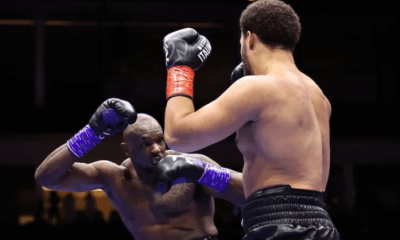
 Featured Articles7 days ago
Featured Articles7 days agoMoses Itauma Continues his Rapid Rise; Steamrolls Dillian Whyte in Riyadh
-
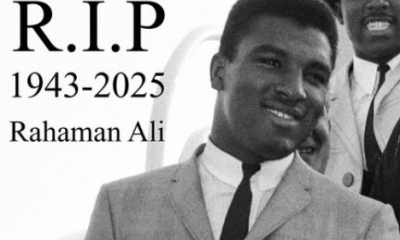
 Featured Articles3 weeks ago
Featured Articles3 weeks agoRahaman Ali (1943-2025)
-

 Featured Articles3 weeks ago
Featured Articles3 weeks agoTop Rank Boxing is in Limbo, but that Hasn’t Benched Robert Garcia’s Up-and-Comers




